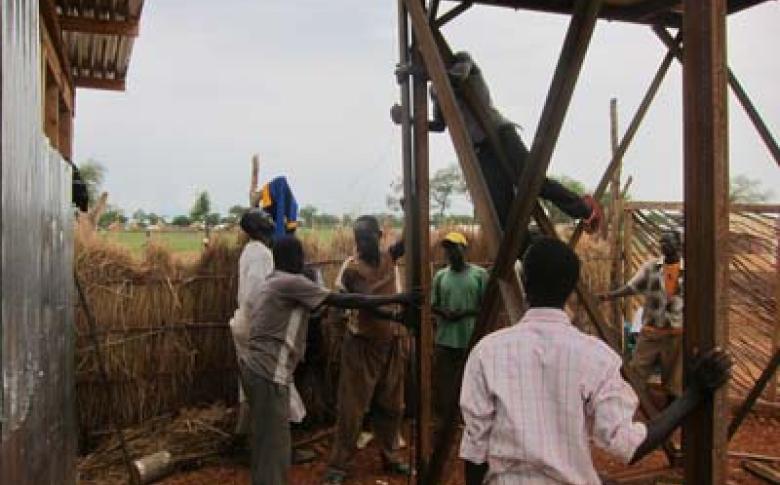ETC Partners Collaborate at Jamam Refugee Camp in South Sudan

July 2012
Since September 2011, the Emergency Telecommunications Cluster (ETC) has been operating in South Sudan where hostilities with Sudan have precipitated a humanitarian crisis. Refugees fleeing fighting in the north have settled in camps such as Jamam where large populations and scarce resources have resulted in severe food and water shortages.
In order to provide a coordinated response to the crisis, the ETC has engaged partners such as ACTED and RedR Australiato provide humanitarian and communications assistance on the ground. Last month, RedR Australia volunteer Chris Alagna was deployed to an ACTED camp to provide maintenance for their communications infrastructure.
“On Wednesday 27th July 2011 I arrived at Jamam Refugee camp to assist the camp managers, ACTED, with the installation of a VHF repeater, after an initial assessment mission by Magnus Gunnarson.
ACTED had previously been supplied with the repeater radio and an external plant, however the latter was found to be faulty. While I was there I was able, with the help of ACTED, to install the antenna onto the existing water tank so that it reached a height of seven metres. I also replaced all of the external plant including the cables, connectors and lightning arrestor so that the site was left with a neat and professional setup.
With the repeater fixed, ACTED were able to communicate within a radius of 20km, which meant that one of the transit sites, K18, could be reached. At the time of the installation there was a lot of activity in the region, and in the following five days, thousands of refugees were moved to Jamam and Batile camps via the K18 and K3 transit sites.
Feedback from ACTED logisticians has confirmed that the antenna installation has made a big difference to their operation, making it much easier to communicate around the camp. This had previously been done with satellite phones which are in short supply and have a large associated cost. ACTED are currently trying to source more VHF radios to be used in the field.”